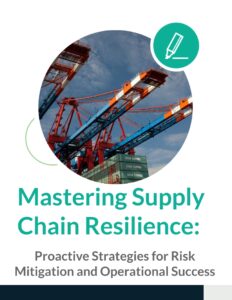As companies grow and face new challenges, the technology stack that once served them well can begin to show signs of wear. Legacy systems, technology debt, shadow IT, and manual workarounds can hinder progress, create inefficiencies, and leave businesses vulnerable to security risks and missed opportunities.
To stay competitive and future-proof your organization, it’s essential to periodically review and assess your current technology stack. This proactive approach helps identify and address the root causes of inefficiencies, ensuring your systems are aligned with your business goals and strategies.
1. Understanding Technology Debt: Unused Licenses, Redundant Software, and Fragmented Systems
Technology debt refers to the costs of outdated or inefficient systems, including unused licenses, redundant software, and fragmented tools that don’t integrate well. These issues often arise as businesses grow and accumulate software solutions that were once useful but no longer align with current needs.
Unused Licenses & Redundant Software: Over time, companies often hold onto software licenses or subscriptions that no longer add value, leading to financial waste. For example, a tool once essential for a department may now be replaced by a more integrated solution. This results in unnecessary costs without improving efficiency.
Fragmented Systems with Overlapping Features: Different teams may use separate tools that overlap in functionality but don’t integrate seamlessly. This leads to data silos, duplicate work, and increased administrative burden. For example, your marketing and sales teams may use different systems to manage customer data, leading to inefficiencies and errors.
Long-Term Impact of Technology Debt
The cost of maintaining redundant or outdated systems accumulates over time. These inefficiencies prevent your organization from scaling effectively, as data becomes harder to manage and workflows become more complex. It’s not just about the direct costs but also the missed opportunities for innovation and smoother operations.
Addressing Technology Debt
To resolve technology debt, start by auditing your tech stack to identify unused licenses and overlapping tools. Consolidate systems where possible, eliminating redundancies and ensuring better integration. Invest in platforms that automate processes and centralize data, reducing manual work and improving operational efficiency.
Clearing technology debt by removing unnecessary licenses, consolidating tools, and integrating systems helps your business operate more efficiently. It reduces costs, improves workflows, and positions your company for growth and innovation.
2. The Perils of Legacy Systems: Why Holding On Can Hinder Progress
Many organizations continue to use legacy systems out of familiarity or fear of disruption. However, these outdated systems become inefficient, insecure, and costly to maintain over time. Their inability to integrate with newer technologies limits flexibility and scalability, ultimately hindering business growth.
Hidden Costs of Legacy Systems
1. Inefficiency: Legacy systems are slow and unable to handle growing demands, resulting in manual processes and wasted resources.
2. Security Risks: Without regular updates, legacy systems become vulnerable to cyber threats, putting data and compliance at risk.
3. Expensive Maintenance: The cost of maintaining outdated systems rises as fewer experts are available to support them, making them costly and inefficient to run.
4. Scalability Issues: Legacy systems often lack the flexibility to scale with business growth, leading to bottlenecks and missed opportunities.
5. Integration Challenges: Incompatibility with modern tools creates data silos, hindering collaboration and decision-making.
The Opportunity Cost of Holding On
The real cost of legacy systems is the missed opportunity to leverage new technologies. Upgrading allows businesses to access advanced features like automation, AI, and improved data analytics that enhance efficiency and customer experience.
Key Areas to Evaluate Legacy Systems
1. Scalability: Can your system grow with your business?
2. Security: Does it protect against modern cyber threats?
3. Integration: Can it connect with newer tools?
4. User Experience: Is it frustrating employees?
5. Innovation: Does it support new business processes and technologies?
The Path to Modernization
To stay competitive, businesses need to assess and modernize their legacy systems. Replacing outdated tools with modern, integrated solutions will improve efficiency, security, and scalability. The initial investment in modernization will pay off in the long run by reducing costs, increasing agility, and enhancing customer satisfaction.
Legacy systems hold businesses back with hidden costs and inefficiencies. Modernizing your tech stack is essential for growth and innovation. By addressing legacy systems, you can unlock new capabilities and position your organization for success in a rapidly evolving market.
3. Shadow IT: A Growing Threat to Security and Efficiency
Shadow IT refers to the use of unapproved technology within an organization. While employees often turn to these tools to bypass inefficiencies in official systems, shadow IT creates several risks and challenges.
Risks of Shadow IT
1. Security Vulnerabilities: Unapproved tools may lack security protocols, increasing the risk of data breaches and compliance violations.
2. Data Silos: With different departments using incompatible systems, data becomes fragmented, making collaboration difficult.
3. Redundancy and Inefficiency: Departments may adopt tools with overlapping functions, leading to wasted resources and complexity.
4. Compliance Risks: Using unsanctioned tools can violate privacy regulations and company policies, risking legal penalties.
Why Shadow IT Happens
Shadow IT often emerges due to slow or ineffective IT responses, perceived inflexibility of official systems, and easy access to consumer-grade technology.
Combating Shadow IT: Fostering Collaboration
1. Open Dialogue: Encourage communication between business units and IT to better understand technology needs and pain points.
2. Scalable, Secure Solutions: Provide business units with tools that meet their needs while ensuring they are secure, scalable, and compliant.
3. Training and Support: Offer ongoing training to help employees fully utilize official systems, reducing the temptation to use unapproved tools.
4. Clear Approval Processes: Create a formal process for selecting new tools to ensure compatibility and security, reducing the risk of shadow IT.
5. Integrated Platforms: Provide flexible, user-friendly platforms that consolidate multiple functions, reducing the need for external tools.
Shadow IT introduces significant risks related to security, collaboration, and inefficiency. By fostering collaboration and providing secure, scalable solutions, businesses can reduce the impact of shadow IT and improve overall performance.
4. Manual Workarounds: The Hidden Costs of Inefficiency
Despite the availability of advanced technology solutions, many organizations still rely on manual workarounds to manage tasks and processes that their current systems are unable to handle efficiently. These workarounds often emerge as temporary solutions to gaps in technology or process inefficiencies. Over time, however, they can become deeply ingrained in the workflow, leading to significant hidden costs in terms of time, errors, and lost productivity.
The Impact of Manual Workarounds
1. Time-Consuming and Repetitive Tasks Manual workarounds are often repetitive and labor-intensive, requiring employees to perform tasks that could be automated with the right tools. For example, employees might manually enter data between systems, update records across multiple platforms, or compile reports manually in spreadsheets. These tasks are not only time-consuming but also take employees away from more strategic, value-adding work.
2. Increased Risk of Errors Human error is inevitable, especially when performing repetitive tasks that require attention to detail. The more manual workarounds employees use, the higher the risk of data entry mistakes, miscalculations, or inconsistencies between systems. These errors can lead to inaccurate reporting, decision-making, and even compliance violations in some cases.
3. Frustration and Low Morale Manual processes are often frustrating for employees, especially when they know there are more efficient, automated solutions available. This frustration can lead to burnout, decreased morale, and disengagement, which can affect overall productivity and job satisfaction. When employees are bogged down by manual work, they may feel that their time and expertise are being wasted on tasks that don’t contribute to the organization’s strategic goals.
4. Reduced Agility and Scalability Manual workarounds can limit an organization’s ability to scale. As companies grow and their operations become more complex, these workarounds often become more cumbersome and harder to manage. Without automation, businesses may struggle to keep up with the increasing volume of data, transactions, and tasks, making it difficult to maintain efficiency and agility.
5. Lack of Visibility and Insight Manual work often results in data being trapped in silos. For instance, when employees manually enter data into spreadsheets or various systems, they may not be able to easily share that information with other departments or use it for real-time decision-making. This lack of visibility can slow down processes and create confusion, particularly when it comes time to generate reports or analyze business performance.
Identifying Manual Workarounds in Your Organization
Manual workarounds can be difficult to identify, as they often develop gradually in response to gaps in technology or processes. Employees might resort to these workarounds without formally documenting them, so they can be easy to overlook. However, there are several key signs that manual workarounds are present in your organization:
- Frequent reliance on spreadsheets for data storage, reporting, or analysis.
- Excessive cross-checking between systems due to integration issues.
- Repeated manual data entry into multiple systems or platforms.
- Workload bottlenecks where employees spend more time managing data than completing high-value tasks.
- Complaints or dissatisfaction from employees regarding inefficiencies or frustration with current tools and processes.
Addressing Manual Workarounds: A Path to Greater Efficiency
To eliminate manual workarounds, businesses need to take a proactive approach by mapping out workflows across departments and identifying areas for improvement.
Here are several strategies to help reduce or eliminate manual workarounds:
1. Conduct a Workflow Audit Start by reviewing workflows across your organization. Map out the steps involved in key processes and identify areas where manual intervention is occurring. Look for tasks that could be automated or streamlined with existing tools, or areas where new technology could fill in gaps.
2. Invest in Automation Tools Once manual workarounds are identified, explore automation tools that can help eliminate these tasks. For example, implementing robotic process automation (RPA) can streamline repetitive tasks, and integrating your systems can reduce the need for manual data entry between platforms. Cloud-based platforms that offer workflow automation can also streamline approvals, reporting, and data updates, allowing employees to focus on higher-value work.
3. Integrate Your Systems Many workarounds stem from system limitations or the inability to share data across platforms. By integrating your technology stack, you can reduce the need for employees to manually transfer data between systems. Ensure that your tools communicate seamlessly with one another, allowing for a more efficient flow of information across departments.
4. Provide Ongoing Training Ensure that employees are fully trained in using the tools at their disposal. A lack of knowledge or understanding of available features can lead employees to rely on workarounds. By investing in training programs, you empower your team to fully leverage existing technologies, reducing the temptation to create inefficient workarounds.
5. Foster a Continuous Improvement Culture Create a culture that encourages continuous improvement and open feedback. Empower employees to report inefficiencies and suggest improvements to workflows. By regularly reviewing processes and technology, you can identify emerging workarounds before they become entrenched, maintaining a more efficient and agile organization.
The ROI of Eliminating Manual Workarounds
While it may seem like a significant upfront investment to address manual workarounds, the long-term ROI can be substantial. By reducing inefficiencies, errors, and frustration, you can increase productivity, improve employee morale, and ensure that your team is focused on high-impact, strategic activities. Moreover, eliminating manual workarounds can lead to faster decision-making, improved collaboration, and enhanced scalability as your organization grows.
Manual workarounds may seem like a quick fix, but they come with significant hidden costs. By identifying and addressing these inefficiencies, organizations can unlock greater productivity, accuracy, and agility. The key lies in a thoughtful review of workflows, the implementation of automation and system integration, and a commitment to continuous improvement. By investing in modern solutions that eliminate manual workarounds, businesses can position themselves for sustained growth and success.
5. A Strategic Approach to Technology Review
Addressing technology debt, legacy systems, shadow IT, and manual workarounds require a systematic and strategic approach. Here are a few key steps to guide your review:
- Conduct an Audit: Start by auditing your current technology stack. Identify all systems, tools, and processes currently in use, and map them against your business objectives. This will give you a clear picture of where inefficiencies lie.
- Engage Stakeholders: Involve key stakeholders from across the organization, including IT, operations, finance, and departments that interact with your technology stack daily. Their insights into system pain points and workarounds will be invaluable.
- Prioritize Issues: Not all issues have the same level of impact. Prioritize areas where technology debt, security risks, or inefficiencies are most detrimental to your business goals.
- Evaluate Solutions: Once you’ve identified key areas of concern, evaluate new tools or systems that can replace or upgrade outdated technologies. Look for solutions that integrate seamlessly with your existing infrastructure and are scalable to grow with your business.
- Foster Change Management: Technology changes can be disruptive, especially when legacy systems are deeply ingrained in your operations. Ensure that there is a clear change management plan in place, with training, support, and a gradual transition to minimize disruption.
6. Lastly – Future-Proofing Your Business
As businesses continue to evolve in an increasingly digital world, regularly reviewing and updating your technology stack is essential. Legacy systems, technology debt, shadow IT, and manual workarounds may seem like manageable problems today but left unchecked, they can hinder your organization’s growth and agility in the long run. By taking a proactive, strategic approach to your technology infrastructure, you can not only reduce inefficiencies but also position your business to thrive in the years to come.
Now is the time to embrace a modern, cohesive technology strategy that drives innovation, enhances collaboration, and supports your long-term success.







